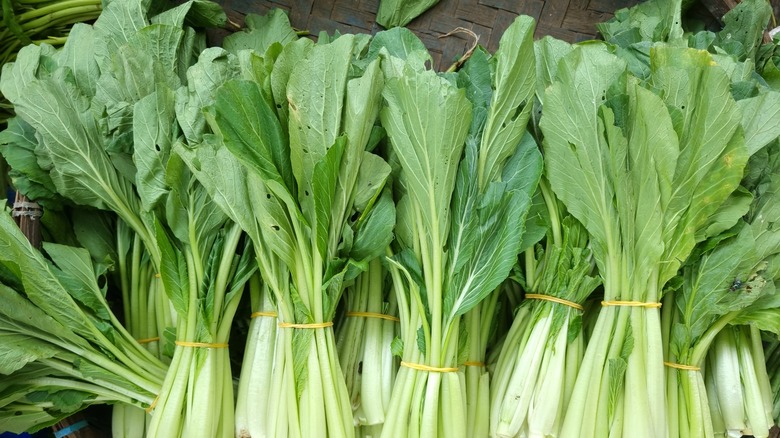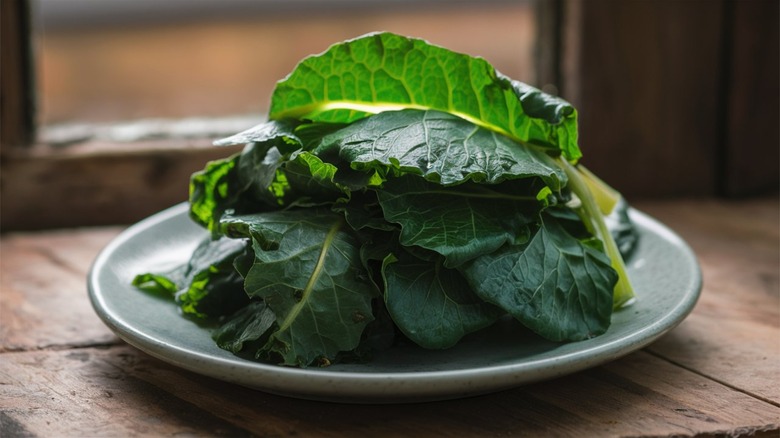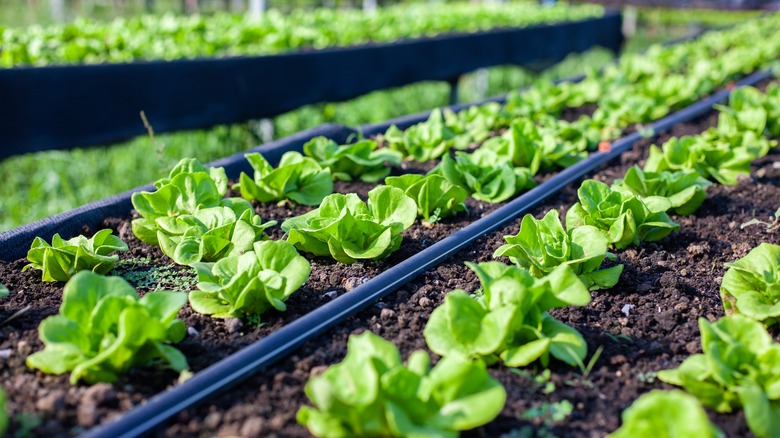Mustard Vs Collard Greens: What's The Difference?
There are all sorts of leafy greens out there; lettuce, cabbage, kale, spinach, swiss chard, arugula. Leafy greens are particularly good for a dairy-free lifestyle, and there's plenty to know about them. But one overlooked aspect of this type of food is how they're different from each other. We all know the differences between iceberg lettuce and kale, but what about similarly-named leafy greens? What about mustard greens and collard greens?
If you're wondering how mustard greens and collard greens are different, the answer, it turns out, is "a whole lot." Not only do the two taste totally different, but they're not even the same category of food, as collard greens are a vegetable while mustard greens are regarded as an herb. The ways you'd use each are different, their textures are different, they look different — pretty much the only thing that isn't different is that they're green (usually) and they have similar nutritional profiles.
Mustard and collard greens have different tastes, textures, and appearances
Mustard greens and collard greens are both are roughly the same nutritionally. Collard greens have more fats, carbohydrates, and B complex vitamins, while mustard greens have a bit more of vitamins A, K, C, and E. Really, though, the differences are by shade rather than type when it comes to nutrition, as they both contain varying levels of each. Beyond that, though? The two are basically nothing alike.
Collard greens have green leaves that are big, robust, smooth, and sturdy, and tend to hold their texture when exposed to heartier, slower cooking methods. Mustard greens, meanwhile, have wider leaves with jagged edges and a distinct wrinkly texture, and they tend to be far more delicate than collards (and sometimes they're a little bit purple). Their taste is just as different, as collard greens are known for a mild, somewhat bitter flavor, while mustard greens have a much stronger peppery taste.
You don't usually use mustard and collard greens the same way
Their usage is significantly different, too. Technically, both are members of the brassica family, which also includes cabbage, kale, broccoli, and Brussels sprouts, but you wouldn't use them the same way. Collard greens are regarded as a vegetable in their own right and are excellent when braised, and you'll often see collards as a holiday side dish. Mustard greens, meanwhile, are generally treated as an herb, which is why mustard greens are such an excellent addition to chimichurri, and they're often fast-cooked with methods like sauteéing. Collard greens are not typically eaten raw, while mustard greens are sometimes added to mixed green salads to give a peppery flavor boost. Both, however, pop up a lot in Southern cooking, and both can be used in soups (and are sometimes mixed with each other).
Serving both mustard and collard greens comes down to knowing how to use them. When you want a more delicate, spicy taste, go for mustard greens — but if you want a milder, more sturdy green, reach for the collards.


